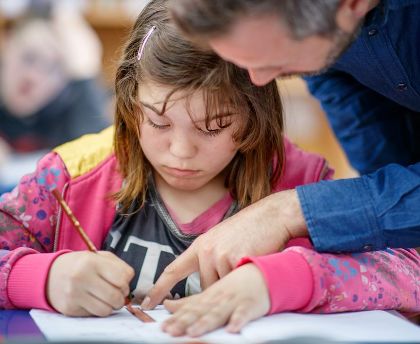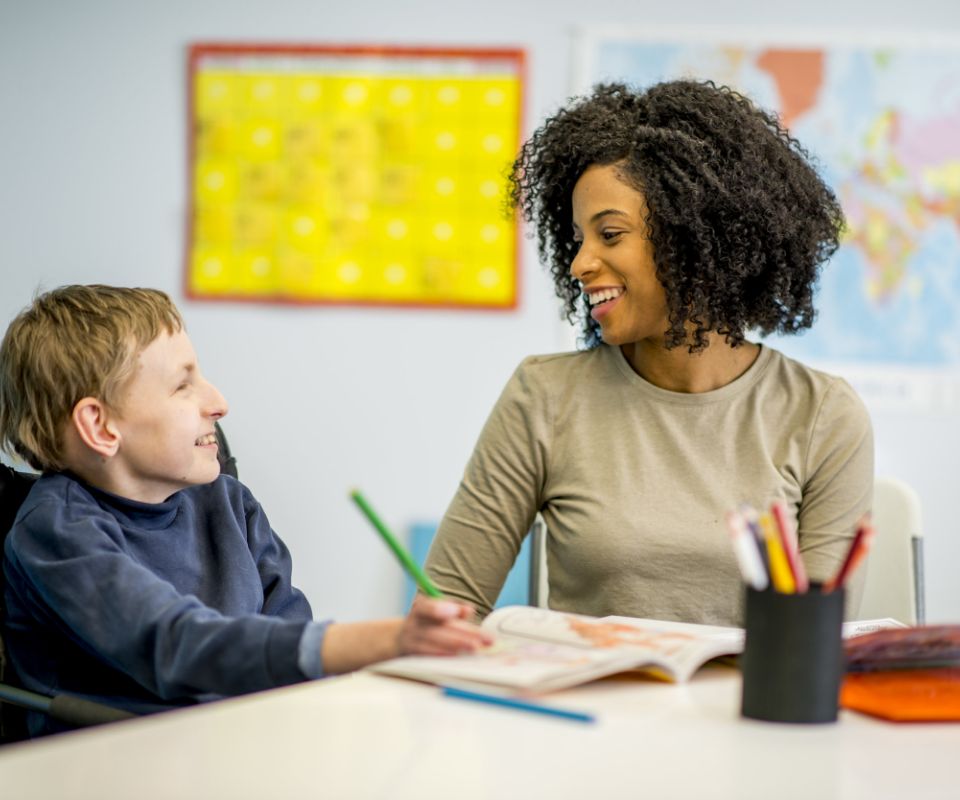High School students are placed in classes that meet their level of support, social skills, age, and academic levels. By carefully placing students into homogenous classrooms, the teachers can better meet the needs of the whole class, assuring that no one is left behind. The class size is small, with a 1:8 – 1:10 teacher-to-student ratio. Arbor School does not accept students who exhibit aggressive behavior toward themselves, others, or property.
At Arbor School, teachers utilize technology and direct instruction for engaging and exciting instruction. Students learn through Universal Design (see below), Project-Based Learning, and STEAM through hands-on and visual methods. Arbor School recognizes that technology is the future of our students and that they will be pursuing careers that are STEAM-related, many of which still need to be developed. Our students can learn programming, 3-D printing, digital art, and traditional art classes.
Arbor School has three learning opportunities based on each student's academic and social abilities.
College Bound for students ages 14 and older
- Small class instruction in English, Math, Science, and History
- Electives include Art, PE, Programming, 3-D printing, Digital Art, and online high-interest classes such as forensics, art/theater, ASL, and more
- Transition to Work, Independent Living, and College classes that include Personal Finance, Career planning, and Social Skills
Supported Employment - Competitive Transitional Learning for students 14-22
- Designed for students seeking competitive employment with or without a degree
- Small class instruction in English, Math, History, and Science
- Introduction to Workskills, Independent Living, Personal Finance, and Career planning
- Transition to Work
Community-Based Instruction - Transitional Learning for students 14-22
- Small group learning in functional reading and math
- Self-Contained classroom with a small teacher/student ratio
- Instruction in Independent Living and Prevocational Skills
- Additional Instruction in Social Skills and AAC communication
Transition to Work, College, and Independence
Arbor School Transition to Work program serves students ages 17 -22. This program allows our students to gain essential life skills such as money, cooking, and employment. Students gain necessary work skills as on-site interns at our local community partners. Currently, our students are interning at a local retirement community, Gordon Food Service, and other local businesses. This partnership allows our students to gain the skills, knowledge, and self-esteem that will enable them to be successful in the workplace. Students gain additional knowledge by running the school snack bar and assisting with set up/serving/clean up during events hosted by the school and local churches.
During class time, the students take English, Math, Science, and History classes to prepare them for graduation. Additional class time includes career exploration, personal finance, minor home repair, and everyday life skills to help prepare them for independent living.
Recent graduates have gone on to post-secondary school, attending local state colleges, four-year universities, and technical and trade schools. Other students have opted to enter the workplace and are employed in fields such as grocery stores, computer repair, and aviation.

Schedule Snapshot
The school day begins with a PE class to get the students ready for the start of the day during homeroom.
A typical class schedule would be:
- PE
- English
- Math
- Elective
- Elective
- Lunch Break – includes 30 minute lunch and 30 minutes of free-time
- History
- Science
- Elective
Individually-Tailored Learning Experience
These components are utilized in combination to help your child with their learning abilities, social skills, and language skills. A typical learning experience at our school also includes:
- Small Classroom Size
- Small Group Instruction
- Hands-on Learning
- Sensory Breaks




